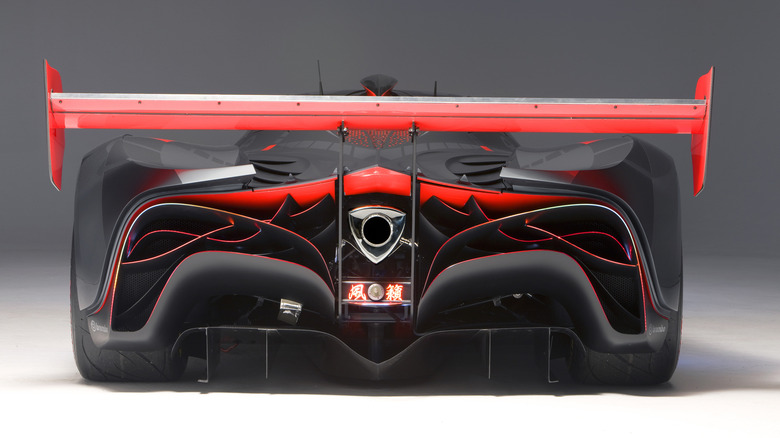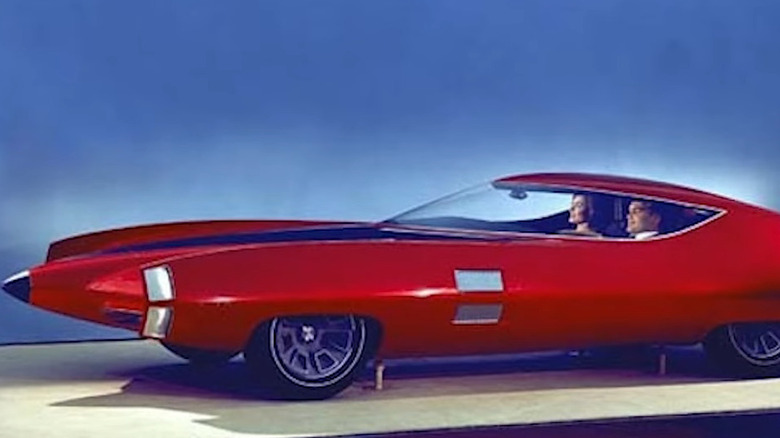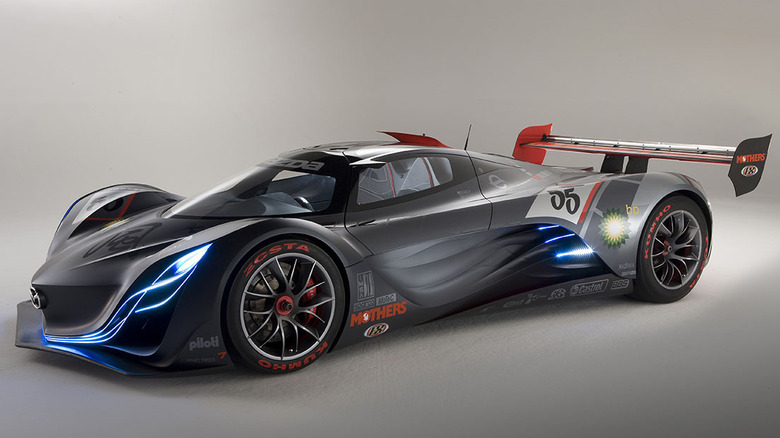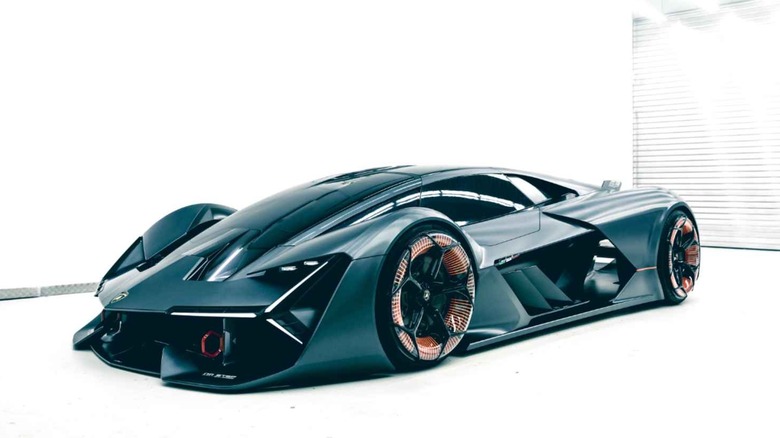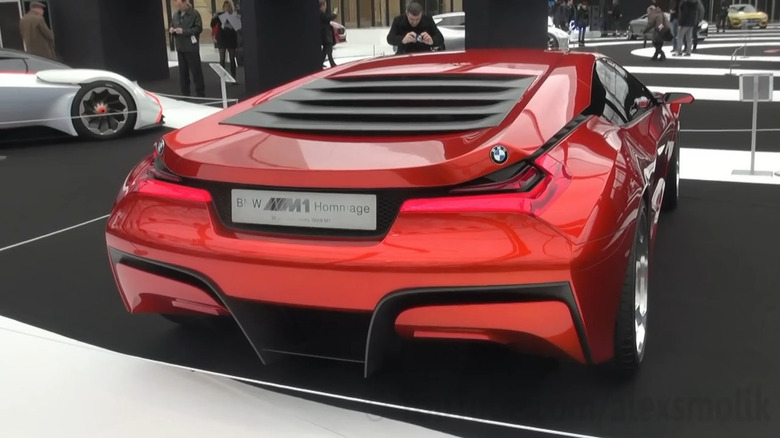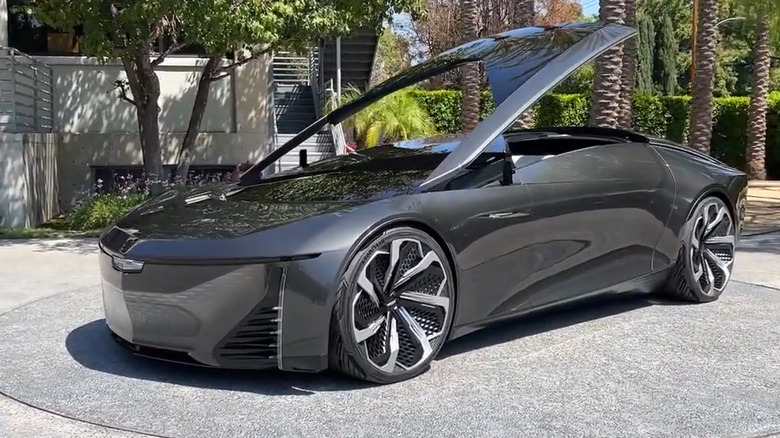6 Concept Cars We Wish We Could Buy
Concept cars are a fascinating sub-segment of the auto industry. These models are usually developed for presentation at auto shows, and are meant to challenge design standards and explore new technologies. While we'd like to see these five Acura concepts go into production, the Honda Afeela concept had obvious flaws. Some of Toyota's coolest models started out as concepts, like the short-lived FJ Cruiser.
Toyota's ability to turn its concepts into reality make it an outlier among automakers. Most concept cars never make it past this stage to find their way into a manufacturer's lineup. This is sometimes due to liability issues — many of these cars are not road-ready and haven't gone through safety tests. If you're not one of the few lucky and wealthy concept car collectors in the world, these vehicles are impossible to purchase. We've put together a wish list of the concept cars we'd most like to see developed into consumer-ready models.
1964 GM-X Stiletto
The GM-X Stiletto is what could be if safety, practicality, and even drivability were not part of the equation. It's truly one of the most mind-blowing concept cars you'll ever come across. As the space race was heating up in the mid-'60s, General Motors enlisted young designers from its Advanced Development Department to come up with the most futuristic design and technologically advanced car they could think of.
It was revealed at the 1964-1965 New York World's Fair, and was touted as a futuristic sports car. The design was meant to create the illusion that the long, rocket-shaped car was hovering. There were no doors or windows; instead there was a hatch on the roof that drivers had to climb in through. The Stiletto had a massive fighter jet-like wraparound windshield, revealing a silver interior full of a mind-boggling amount of buttons, switches, and displays. Even the steering was aircraft-inspired, featuring a yoke instead of a wheel. Just like the sci-fi spaceships that inspired its form, the GM-X Stiletto featured an AI assistant and a rearview camera with a live video feed so you could watch your surroundings from the cockpit. It was intended purely as a design showcase, and didn't even have a powertrain.
2008 Mazda Furai
The Mazda Furai was revealed at the 2008 Detroit Motor Show, as a more functional version of the extremely artistic and minimal Nagare concept. The two concepts shared flowing features inspired by contours of the ocean floor and windy sand dunes. Beneath its dramatic appearance, the Furai had all the inner workings of a race car. Its chassis was from a Courage C65 Le Mans prototype, and the steering wheel looked like it was borrowed from a Formula 1 car.
The Furai was never really meant to be driven, but that didn't stop car enthusiasts from fantasizing about the car. It even appeared in Forza Motorsport and other racing games after its initial appearance. But in 2013, the fantasy came to an end when Top Gear Magazine revealed that it had been shooting a feature on the Furai only for the engine bay to catch fire. The Furai was completely destroyed, but that hasn't stopped us from remembering what could have been.
2012 Jeep Mighty FC
Sort of like a kei truck on steroids, the Jeep Mighty FC — with FC standing for "forward control" — was a capable monster that was ready to tackle tough terrain. It had nearly 40-inch tires, portal axles that provided 5.5 inches of lift, and a lengthened Wrangler chassis. Inside was a 3.6-liter V-6 engine, unchanged from how it appeared in the Jeep Wrangler Rubicon. These elements combined to ensure the Jeep Mighty FC could easily tackle almost anything in its path, leaving Jeep fans begging for a resurgence of the rare and respected Jeep FC.
The Mighty FC was one of six concepts that Jeep showed off at the 2012 Easter Safari in Moab, Utah. Although it was a smash hit at the annual gathering of Jeepers, it wasn't practical as a production vehicle. The truck bed was pretty small (4 feet by 4 feet) and the height made it hard to get into and out of. Despite looking like a beast, the Jeep Mighty FC couldn't pass crash tests due to a lack of crumple zones. Its front bumper was also high enough to make it a hazard to other vehicles.
2017 Lamborghini Terzo Millennio
The Lamborghini Terzo Millennio is an electric hypercar concept that was focused on energy efficiency in every way possible. Electric vehicles are nothing new — and are now the focus of many top car companies — but the Millennio went above and beyond what had been done up to that point. Lamborghini said its goal was to "develop an innovative supercapacitor" for advanced energy regeneration. The all-wheel drive system used motors at each wheel, with a soundtrack imitating Lamborghini's V12 gasoline engine.
To increase energy efficiency, the Millennnio's design is focused on being light and aerodynamic. It has vents and tunnels on the exterior similar to those on the Lotus Evija, an electric hypercar that is designed to "eat through the wind." The Terzo Millennio took this concept further by using its body panels to store electricity. The company worked with MIT scientists on this technology, although the Terzo Millenio was never intended to be a production car. Instead, it was meant to be a proving ground for features like the active aerodynamic fins, energy-storing body panels, and Y-shaped exterior lights.
2008 BMW M1 Hommage
BMW presented the M1 Hommage concept car on the 30th anniversary of the super-cool BMW M1 at the 2008 Concorso d'Eleganza. The unique one-off model was designed by Chris Bangle and Adrian van Hooydonk with the goal of being equally functional and innovative. It took a lot of design elements from the M1, and added plenty of aerodynamic features. One interesting way the Hommage elevated the M1 design was with its engine covering, which extended from the window line and was topped with a vented panel.
BMW admitted there was never an engine in mind to power the M1 Hommage. "Even though it would have interested most fans of the BMW M1 Hommage: A power unit was never in mind for what was purely a design study." While the Hommage never went into production, the concept greatly influenced the i8, a hybrid sports car that had a brief run as a 2019 and 2020 model. The Hommage also played a part in the design of the BMW Vision M Next, a mid-engined hybrid. The Hommage definitely lives on, but we can't help but wish it had been given an engine of its own.
2022 Cadillac InnerSpace
The 2022 Consumer Electronics Show in Las Vegas saw the reveal of one of the most interesting Cadillacs ever. The InnerSpace concept was a two-passenger luxury vehicle that was electric and autonomous. It was part of the Cadillac Halo concept portfolio, and represented the future of transportation. In a press release, Cadillac said the Halo project had the "goal of a world with zero crashes, zero emissions, and zero congestion." While the concept of autonomous cars isn't a hit with everyone, the InnerSpace had the potential to change stubborn minds thanks to its mesmerizing design.
It had a panoramic glass roof that connected to the edges of the body, plush seats that pivoted outward when the doors opened, and a sliding infotainment screen in the cockpit. Advanced sound technology gave the InnerSpace a quiet ride, completing the serene and relaxing experience. GM had presented two other Halo models at the same venue the year before. The PersonalSpace was a flying pod that would have allowed passengers to soar above traffic, and the SocialSpace was designed for up to six passengers. None of the three vehicles ever made it past the fantasy stage, but Cadillac now offers SuperCruise autonomous driving capability on nearly all of its current models.
